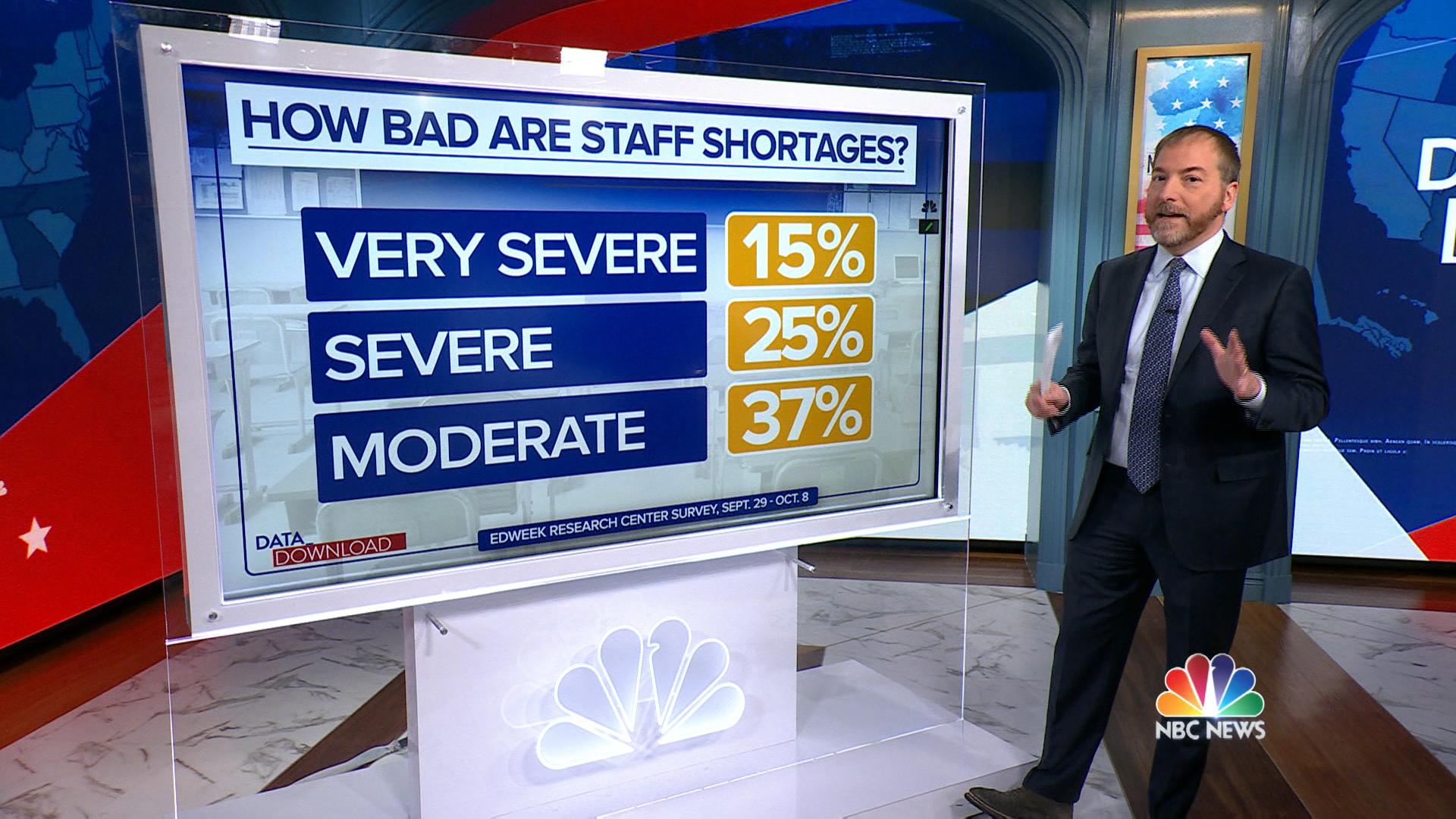
WASHINGTON — The holiday break is here for K-12 students and for many schools the pause in instruction means it’s time for serious questions about how they will go forward in 2022. A return to normal (or closer-to-normal) schooling this past fall has led to parent-teacher tensions, combative school board meetings and big staff shortages in districts across the country.
Much of the anxiety centers on how to handle Covid-19 and in some districts the staff shortages have become so pronounced that there is a fear that some teachers and other staff members may not return when schools are back in session in January.
That’s a problem because most schools were already starting in a tough spot this fall.
In October, Education Week released a survey of principals and district administrators that found deep shortages in terms of school staff.
In total 37 percent of those surveyed said staffing shortages were “moderate,” while 25 percent said the problems were “severe” and another 15 percent said they were “very severe.” Add it up and that’s 77 percent of those surveyed saying staffing shortages were creating notable impacts.
That’s nearly eight in 10 schools experiencing shortages, and it shows how deep the problems were this fall.
Where were the problems being felt? Pretty much across the board, according to the Education Week survey.
The shortages were most acute among substitute teachers, where 77 percent of districts or schools said they had struggled to hire enough to fill their needs. That’s probably not a surprise; Covid and Covid testing mean there are likely to be more days than normal when regular teachers cannot do their jobs.
And substitute teachers are one area where schools could be hit twice as hard — an increased need for more substitutes and increased difficulty in finding people to do the job as people have been reluctant to rejoin the labor force for several reasons.
In other staffing areas, 68 percent of those surveyed said their schools or districts had struggled with finding enough bus drivers. More than half of those surveyed, 55 percent, said they were having a difficult time finding teacher aides.
And nearly half, 48 percent, said their school or district was having a difficult time finding enough full-time teachers.
In short, the “great resignation” seems to have hit schools across all positions, as seen in data from the Bureau of Labor Statistics.
Since July the number of people employed in education in local governments has declined by more than 200,000. Over the last year, peak employment in education at the local level came in July of 2021. That’s the middle of the summer as schools are figuring out staffing for next year. The number has dropped every month since then, during the school year.
And the July peak number, 7.8 million, was still 200,000 below the figure in February 2020, just before the pandemic hit. If the February 2020 number, 8 million, was the true measure for where local school employment should be, the current November 2021 figure is off by some 400,000 employees.
Perhaps more concerning for the schools, all those shortages mean the work at schools is harder as well. Regardless of how many teachers there are in each school, the number of students to be taught doesn’t change. Classes must be bigger, or teacher class loads have to grow. Bus routes don’t disappear just because there’s a pandemic. Drivers must just drive more.
There are a lot of increased pressures in schools, and they may be discouraging people from seeking jobs as teachers, aides and bus drivers, which in turn makes pressures worse, creating a kind of negative feedback loop in education employment.
A November Education Week poll shows districts are feeling the pinch, maybe even more dramatically than shown in the BLS data.
The poll found more than half of those surveyed, 52 percent, said staffing shortages had gotten more severe in their school or district since the beginning of the school year. Only 6 percent of those surveyed said the problem with shortages had improved.
And, of course, all those surveys were conducted before the arrival of the omicron variant, which is upending what we know about Covid just as the holidays hit. What we learn about omicron in the new few weeks could change when students return to school and/or what classes look like when they do.
But the bigger message in these data is more sobering. The great resignation is not hitting all industries in the same way. The numbers suggest there has been a deep and fundamental disruption to the education system that is rippling through it and regardless of what we learn about omicron and Covid in the next few weeks and months, getting things back on track is probably going to take some time.
Source: | This article originally belongs to Nbcnews.com









